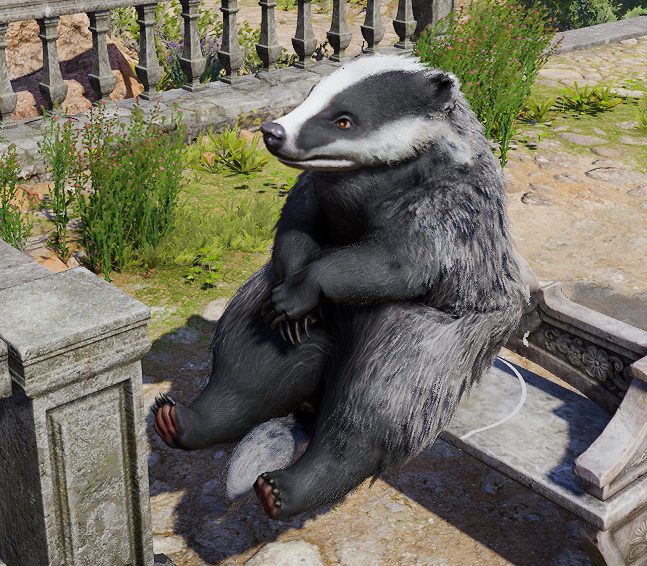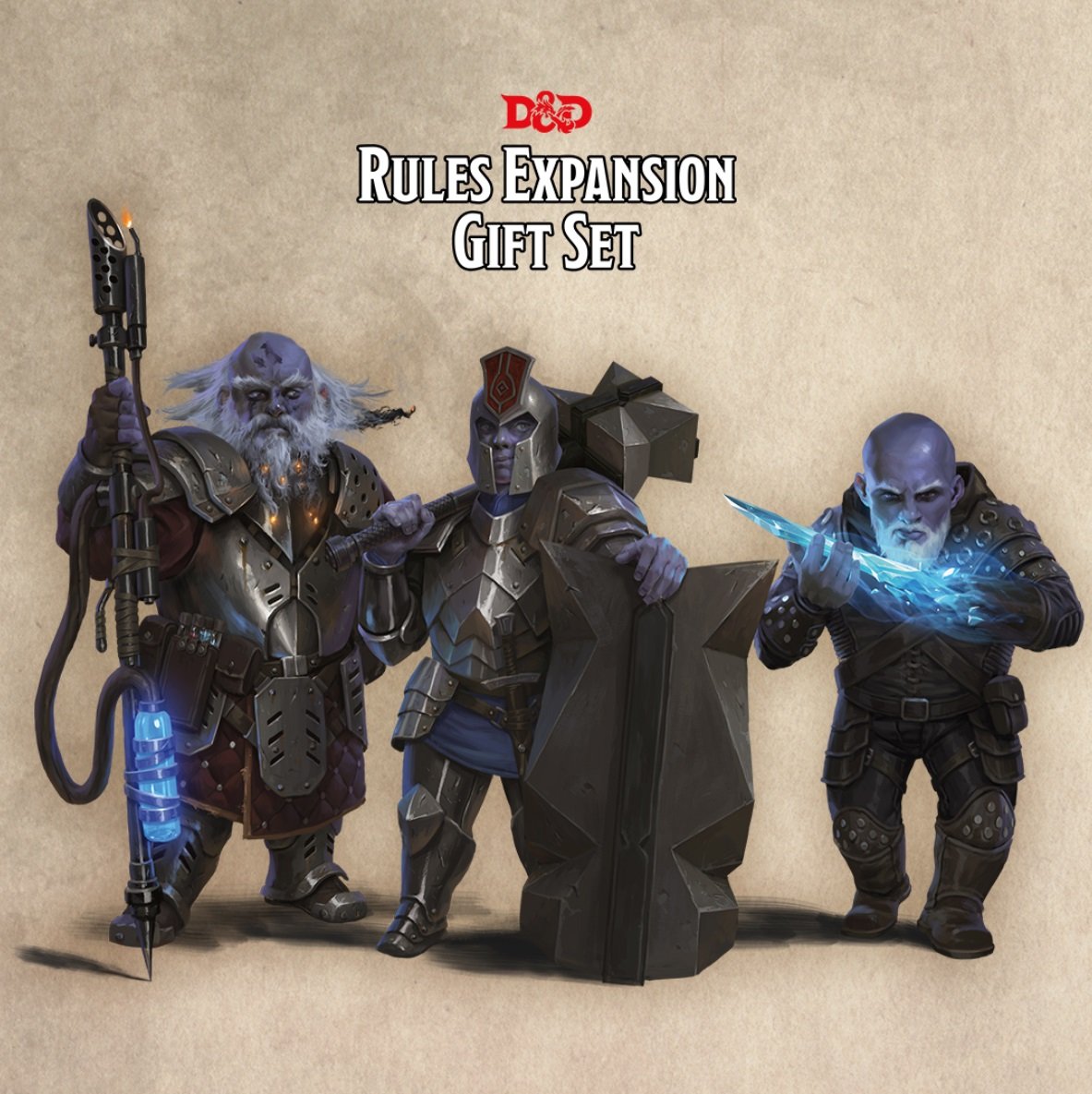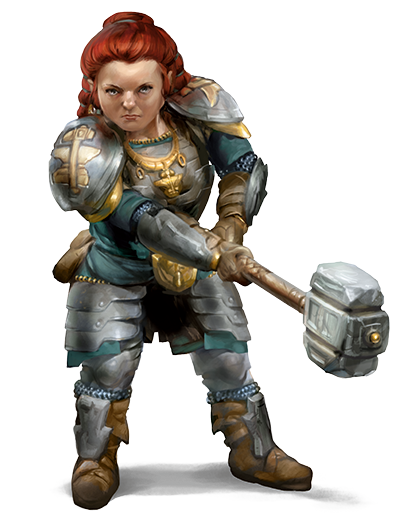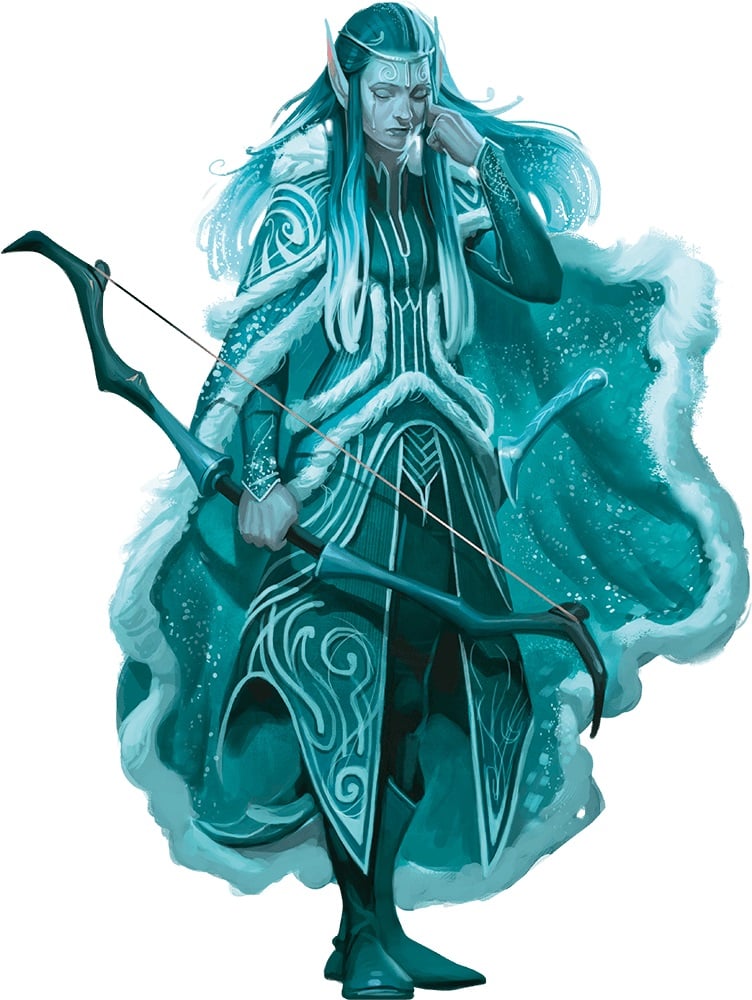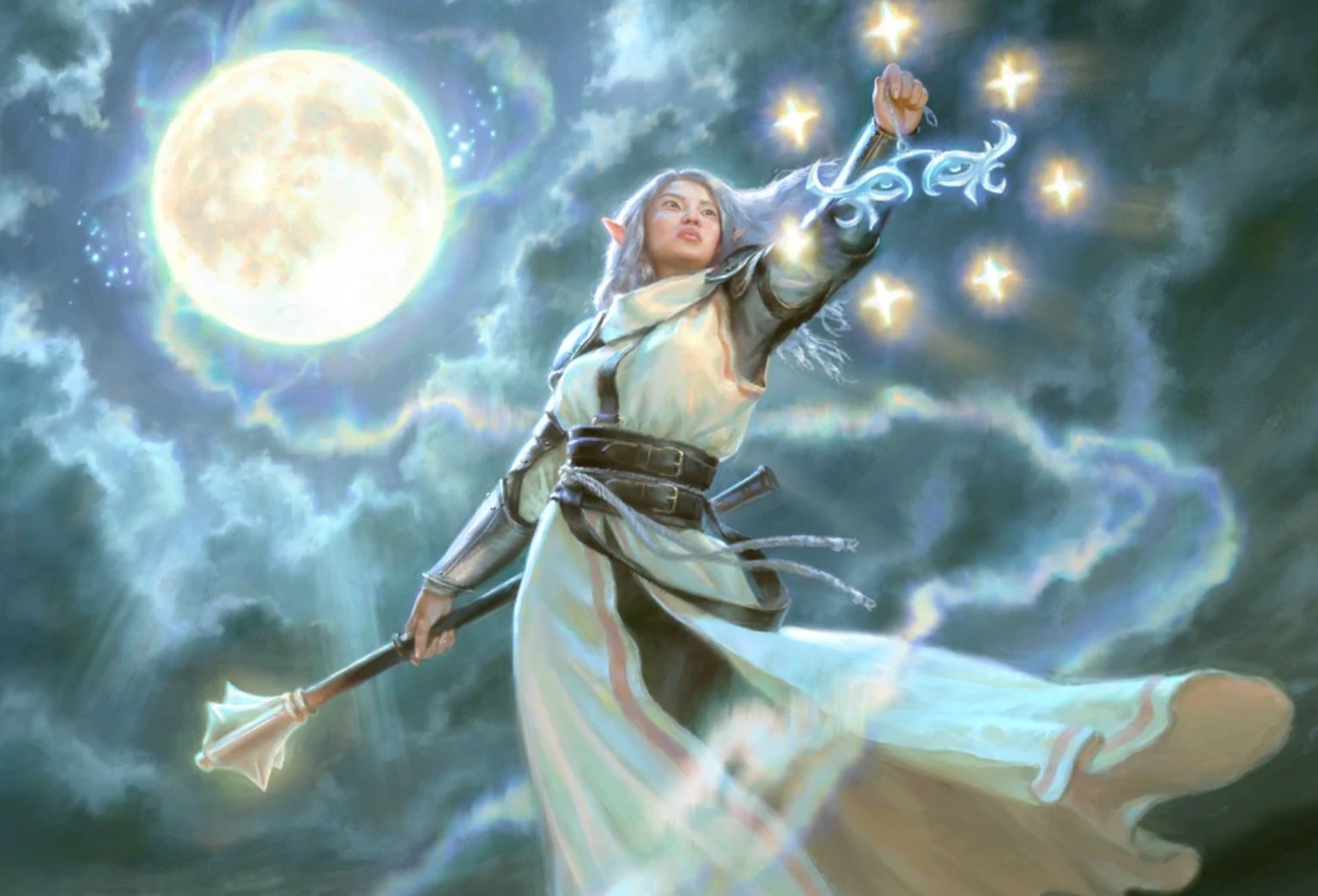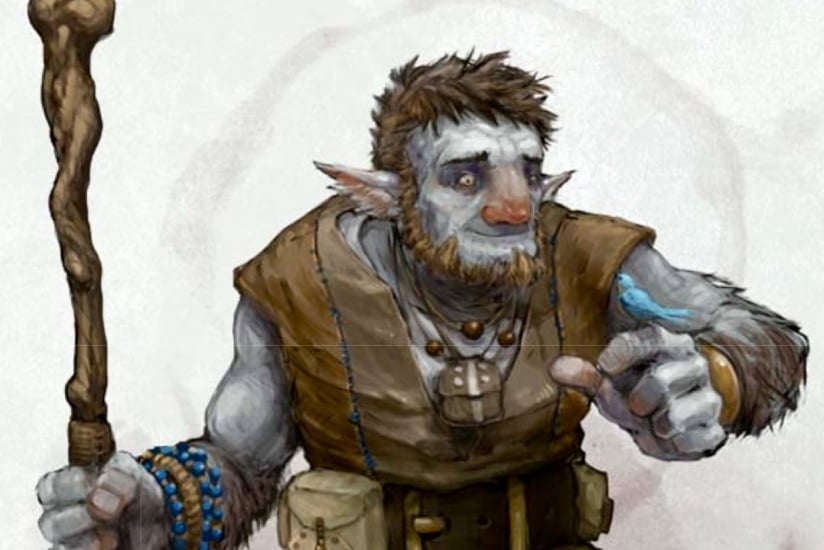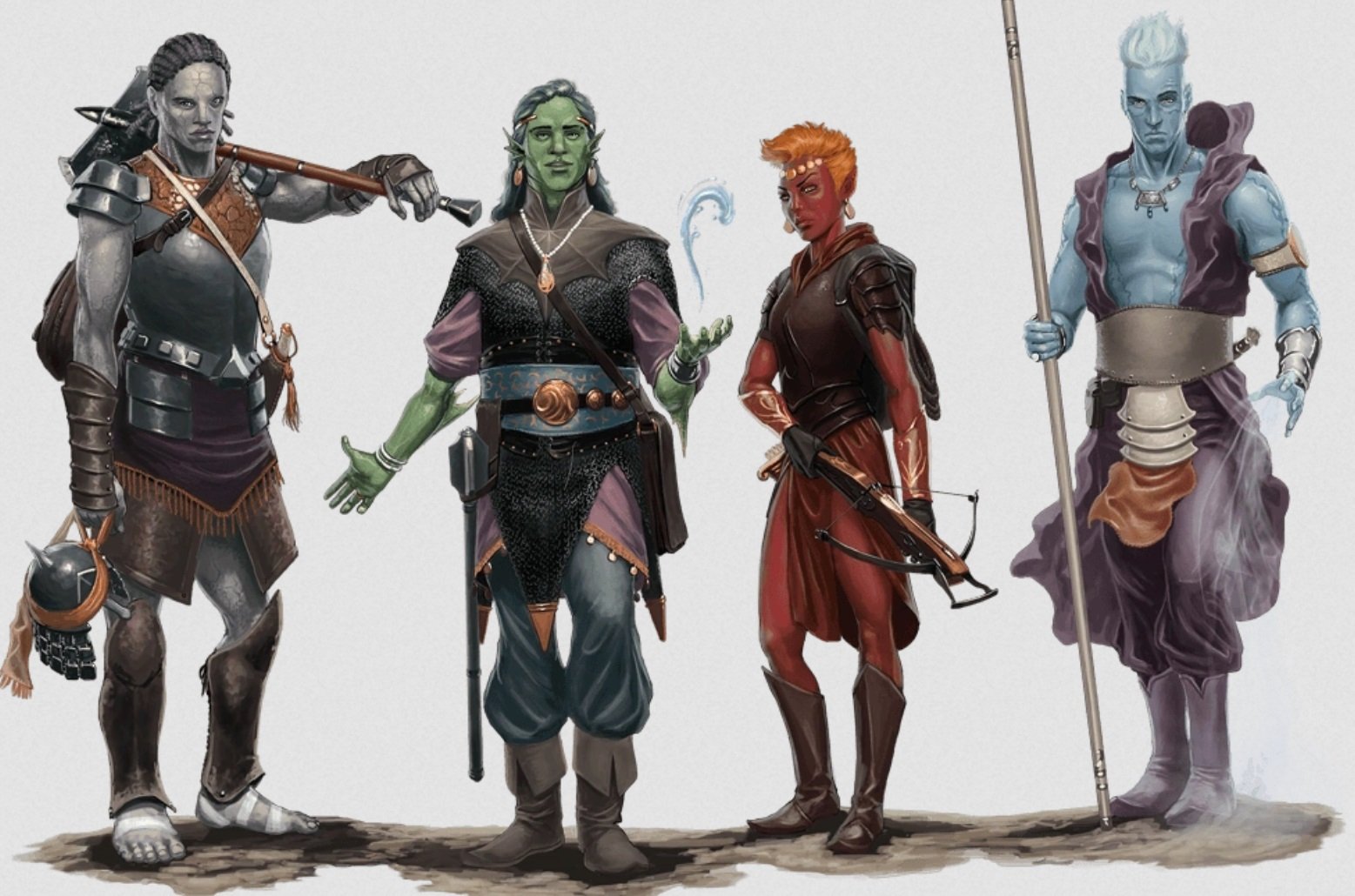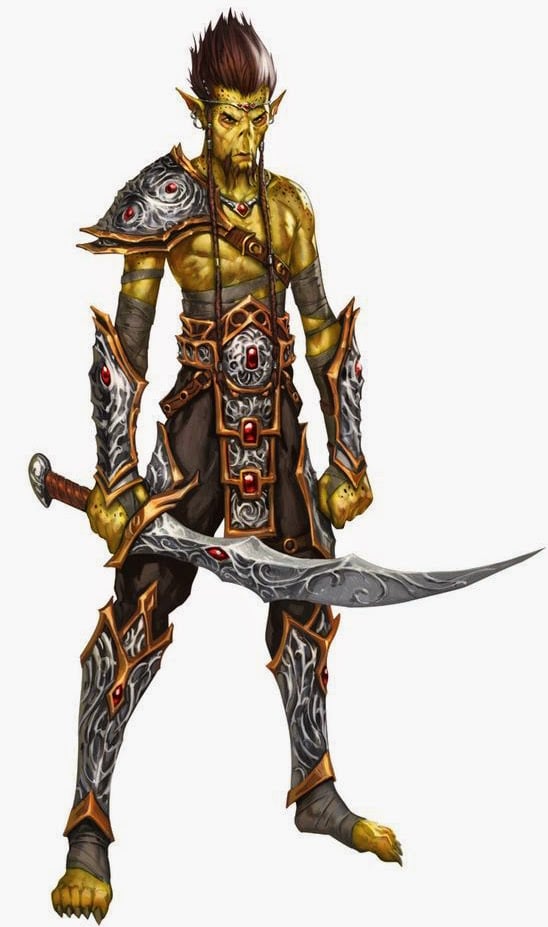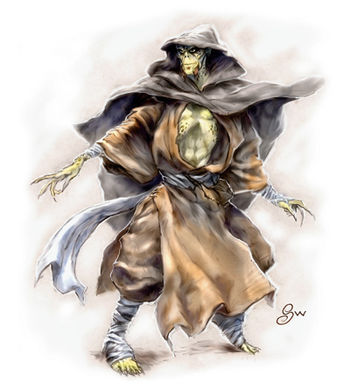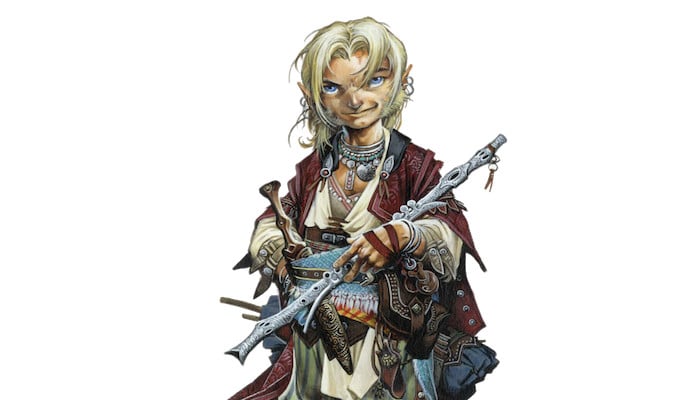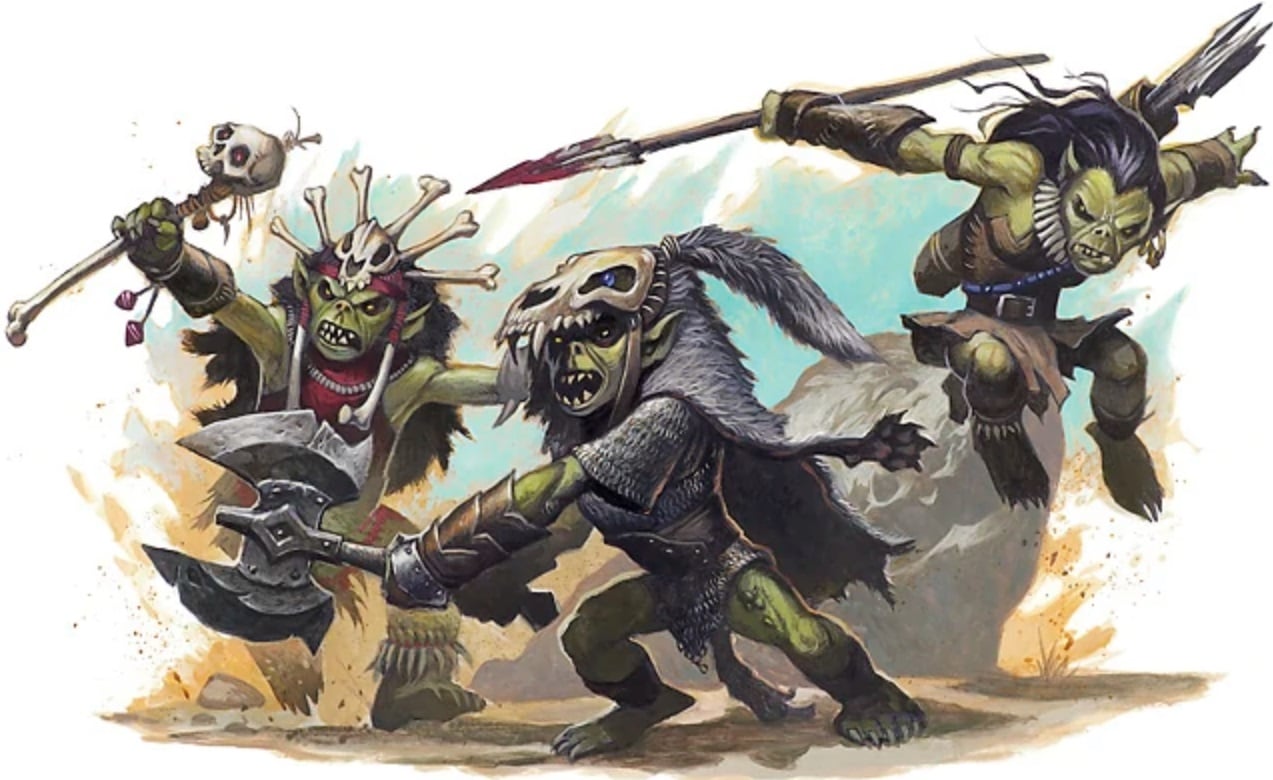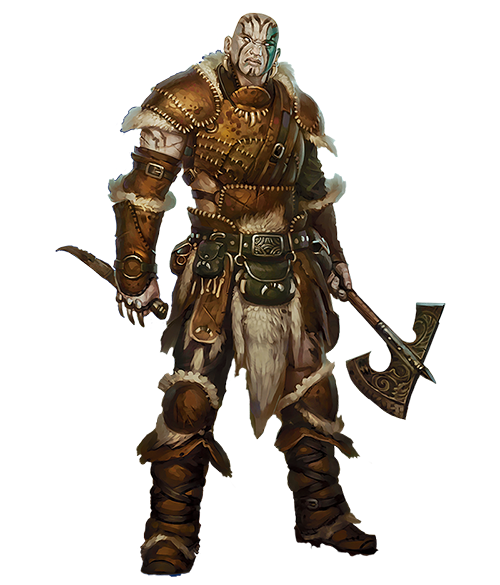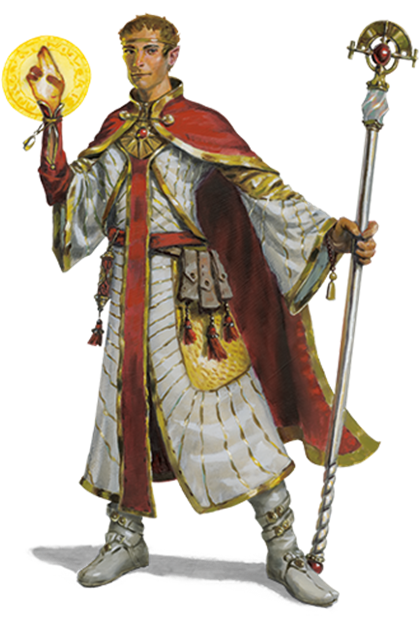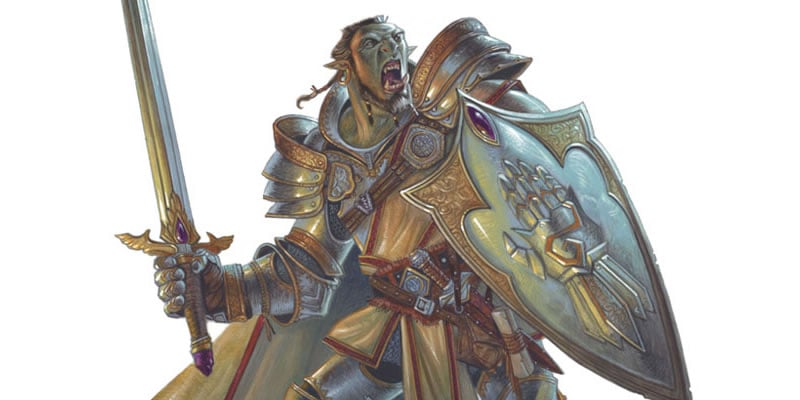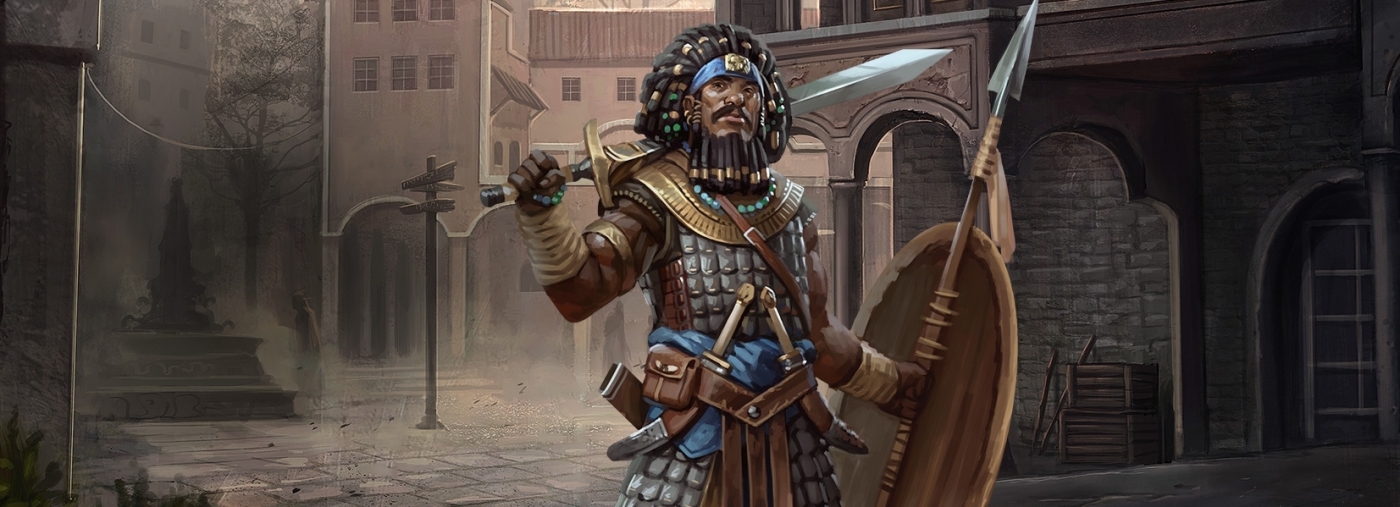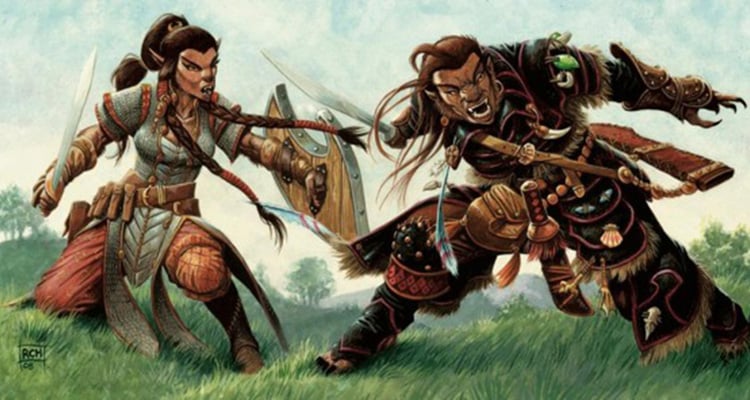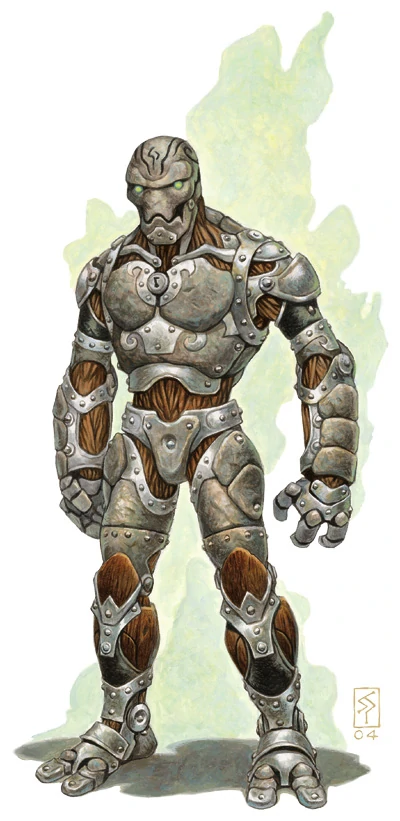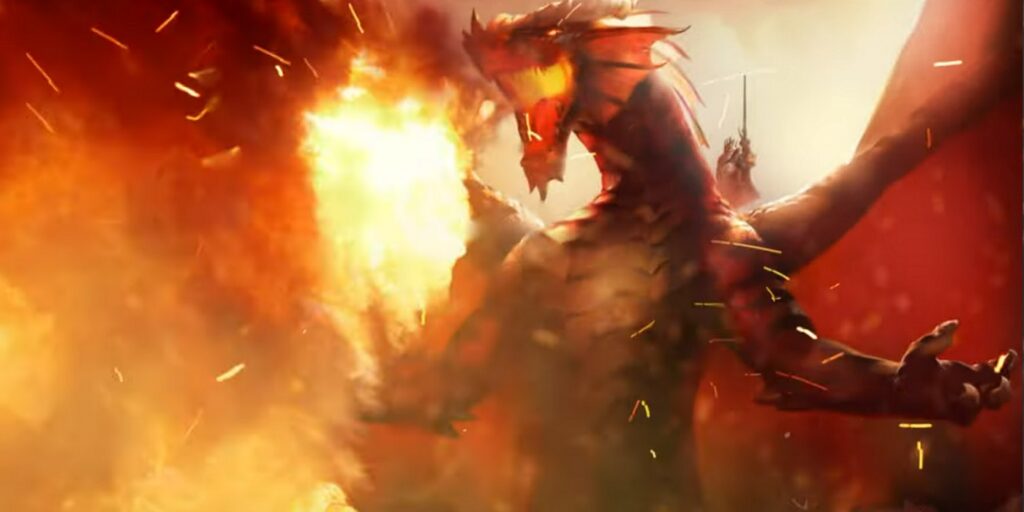A Guide to D&D’s Playable Races
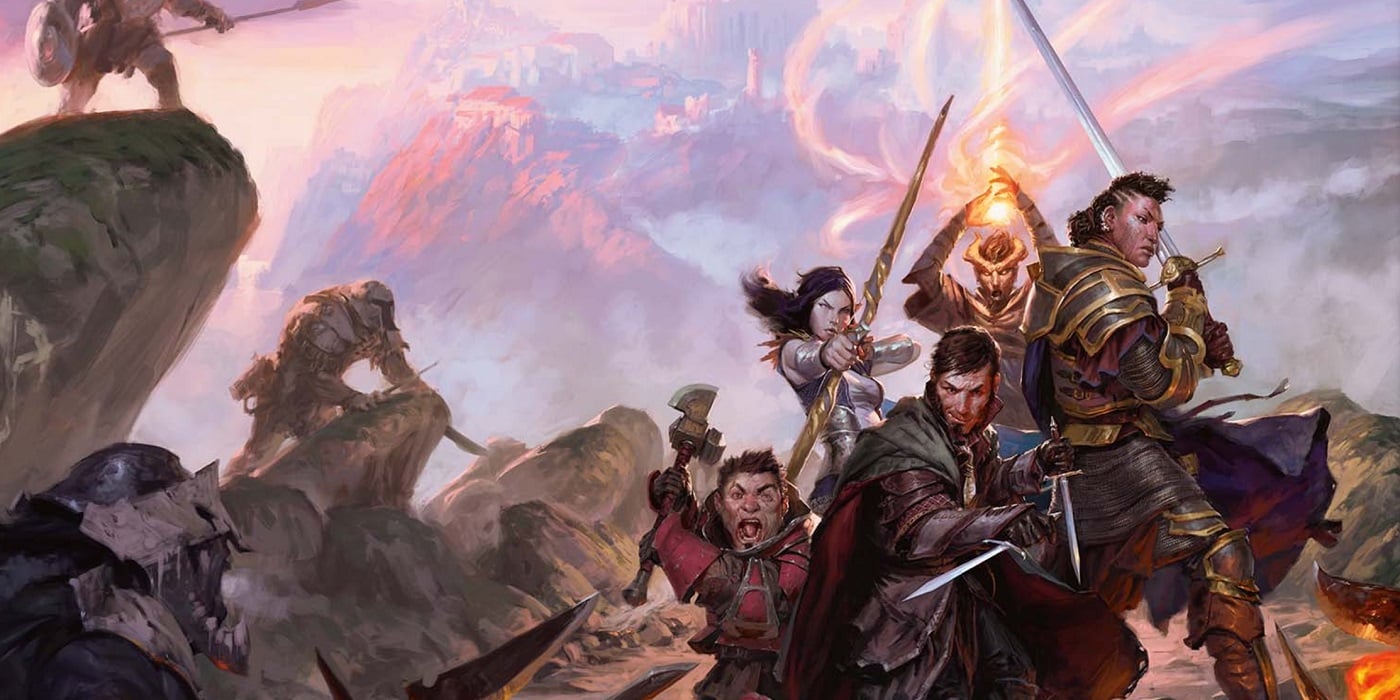
In D&D, you can be, well, not anything. But you can be one of these kinds of creatures. Here’s an overview of playable D&D 5E races.
When it comes to Dungeons & Dragons, one of the most important decisions you can make is which D&D 5E race you’re playing. Now, we don’t have time to go into how the word “race” is inaccurate because really it’s species. And maybe culture. But D&D sets its own rules.
We’re just here to take a look at some of the more popular player race options out there. This is just an overview of what these options are like and what they’re good at. It is by no means comprehensive, but it’s enough for anyone looking to get started with a new character.
Jump To…
Aarakocra
Aarakocra are winged bird people who originally came from the Elemental Plane of Air. They have a storied connection to D&D’s past. The earliest Aarakocra served the Wind Dukes of Aaqa and were given power over the winds. And modern Aarakocra retains some measure of that ancient gift.
This is reflected mechanically in the Wind Caller feature, which grants this D&D race the ability to cast the gust of wind spell without needing a material component or a spell slot. Alongside this, they can fly and have sharp talons for a powerful, unarmed strike.
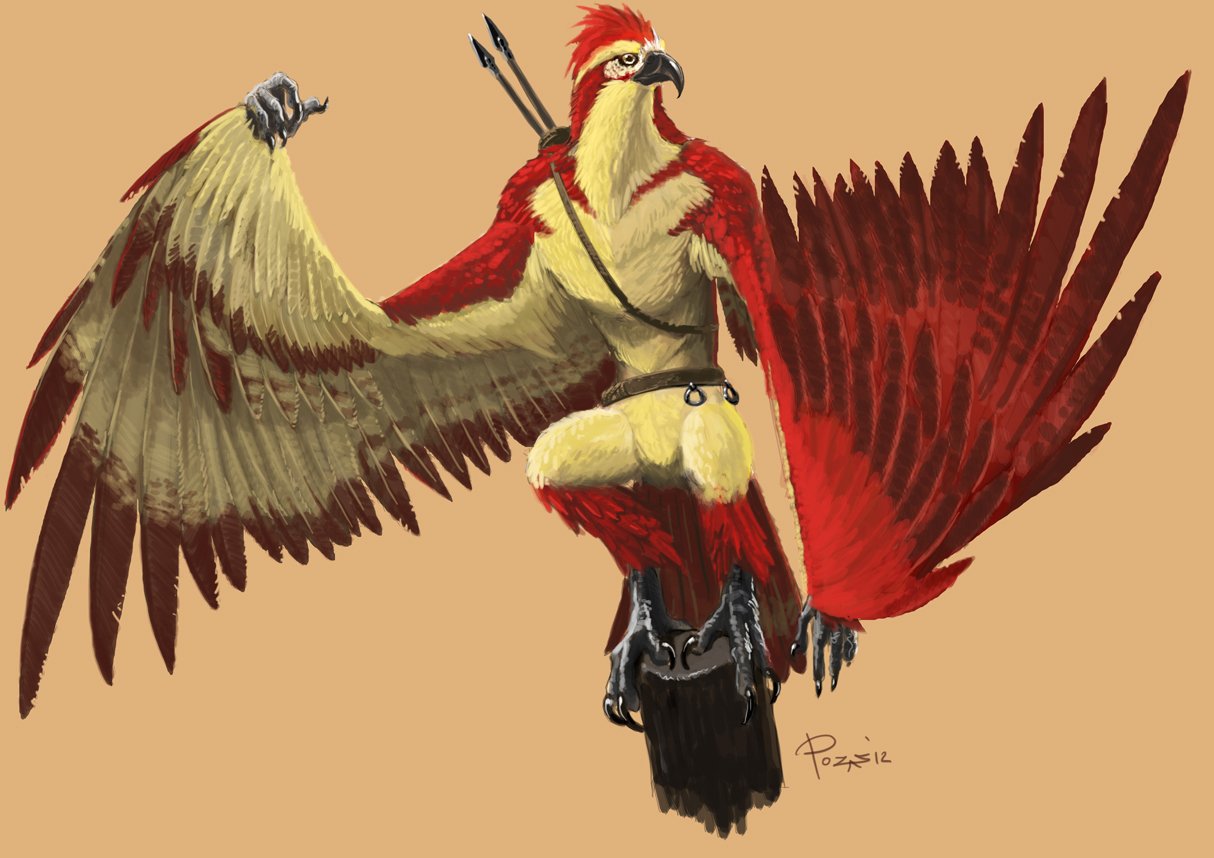
Aarakocra (post-Mordenkainen Presents: Monsters of the Multiverse) can pick from either +2/+1 or +1/+1/+1 to any ability score they decide (as long as they’re different). They are suited to a number of classes.
Aarakocra make excellent caster options, as you can fly and stay out of melee range. Their increased mobility makes them great Monks and Rogues, as they can use those classes’ enhanced mobility to get where they need to on the battlefield. Similarly, playing a lightly armored Fighter or Ranger (focusing heavily on Dex) is another great option.
Custom Lineage
You also get to decide between darkvision or an extra skill proficiency. As you might expect, a Custom Lineage is suited to whatever D&D 5E race you decide you want. This is like the variant human, but you could be a mouse person. Or a humanoid snake that isn’t a Yuan-Ti. You could be anything as long as you’re humanoid in type/shape, which works for elves raised by dwarves, living energy beings incorporated into a mortal shape. Rock people. You name it! Go wild with this one.
Deep Gnome
Also known as svirfneblin, deep gnomes are natives of the underdark and are suffused with subterranean magic. Gift of the Svirfneblin grants them the disguise self and nondetection spells at the 3rd and 5th level, making them particularly skilled at hiding.
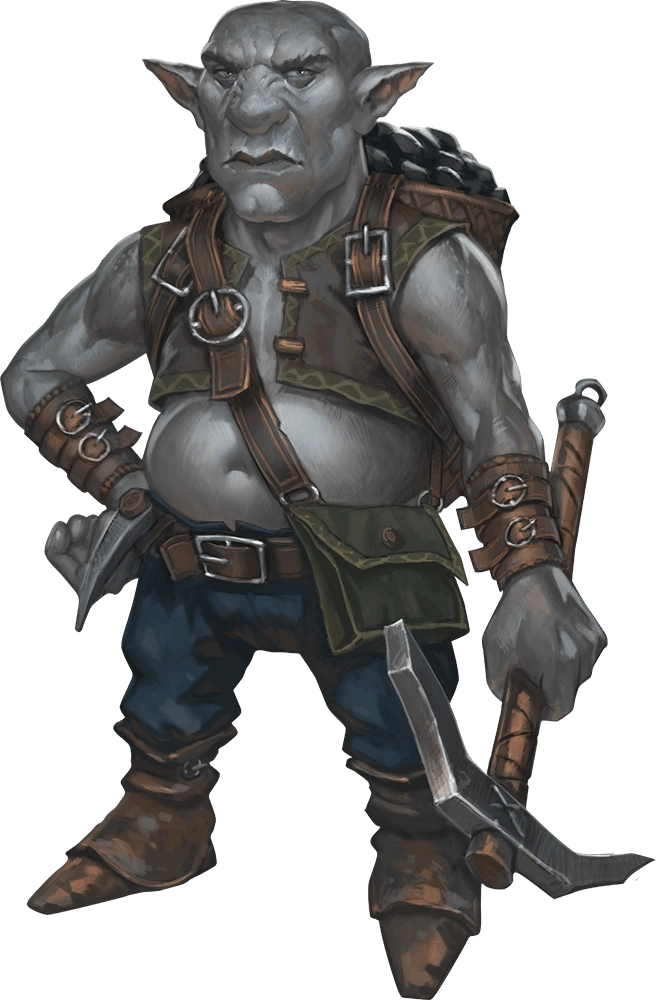
And Svirfneblin Camouflage lets the D&D race get an advantage on any stealth check a few times per day. They can pick from either +2/+1 or +1/+1/+1 to their ability scores. This means that you can tune a svirfneblin to any class, really.
Rogues will probably get the most out of them. But sneaky Rangers can benefit from their natural affinity with stealth as well. And since they have an advantage on Intelligence, Wisdom, and Charisma saves against spells, they can be surprisingly resilient. Throw on a Barbarian to shore up weaknesses, or be a Paladin and never fail a save again.
Dragonborn
Dragonborn is one of the iconic PHB D&D races. These are the humanoid descendants of dragons. They hatch from eggs, and though they lack wings or a tail, there’s no denying their draconic majesty.
Dragonborn gets +2/+1 to Strength and Charisma (although you can change this to anything with Tasha’s Cauldron’s character creation rules), as well as a breath weapon and resistance to damage, neither of which is amazing. But the Dragonborn’s stat spread is pretty nice for most D&D characters.
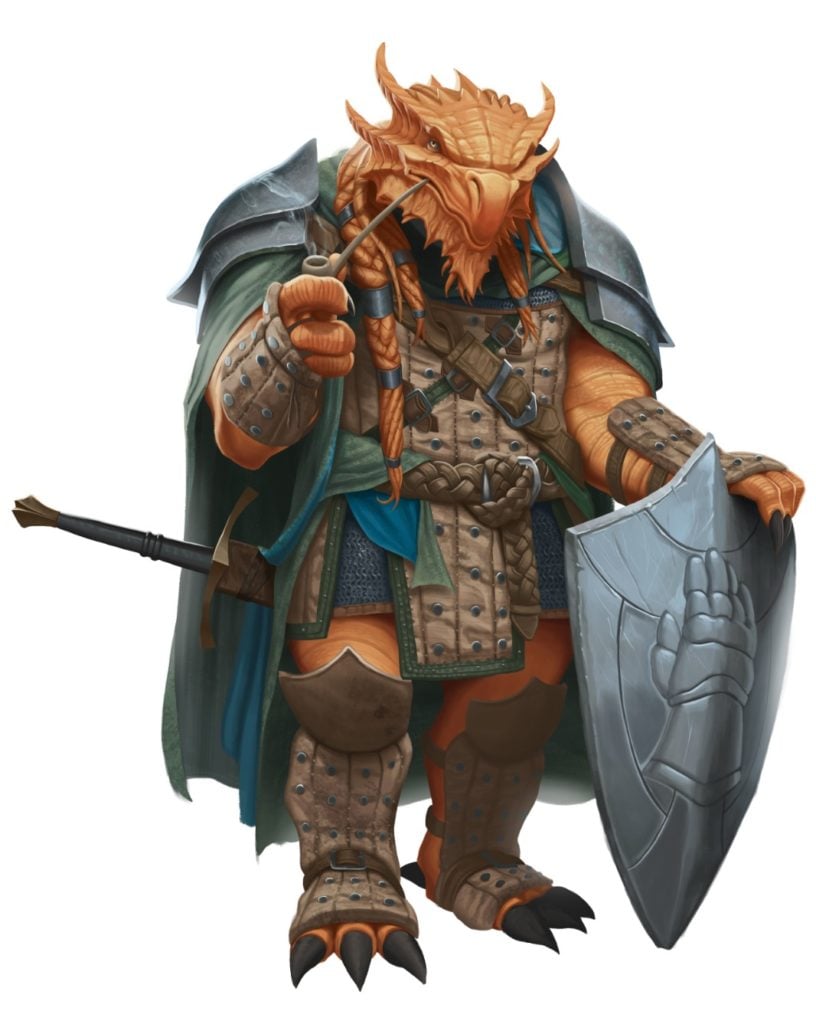
With a +2 Strength, they make excellent melee fighters of any kind. Paladins and melee-focused Bards are perhaps the best bet. But Fighter and Barbarian are good too. While the bonus to Charisma means that they’re good at certain kinds of spell casting. Sorcerers and Warlocks (as well as Bards) find a good home with a Dragonborn.
Drow
Also known as dark elves, drow are elves who follow Lolth out of the Feywild. Many of this D&D race settled in the Underdark; some still revere the Spider Queen, but others have their own enclaves throughout the world.
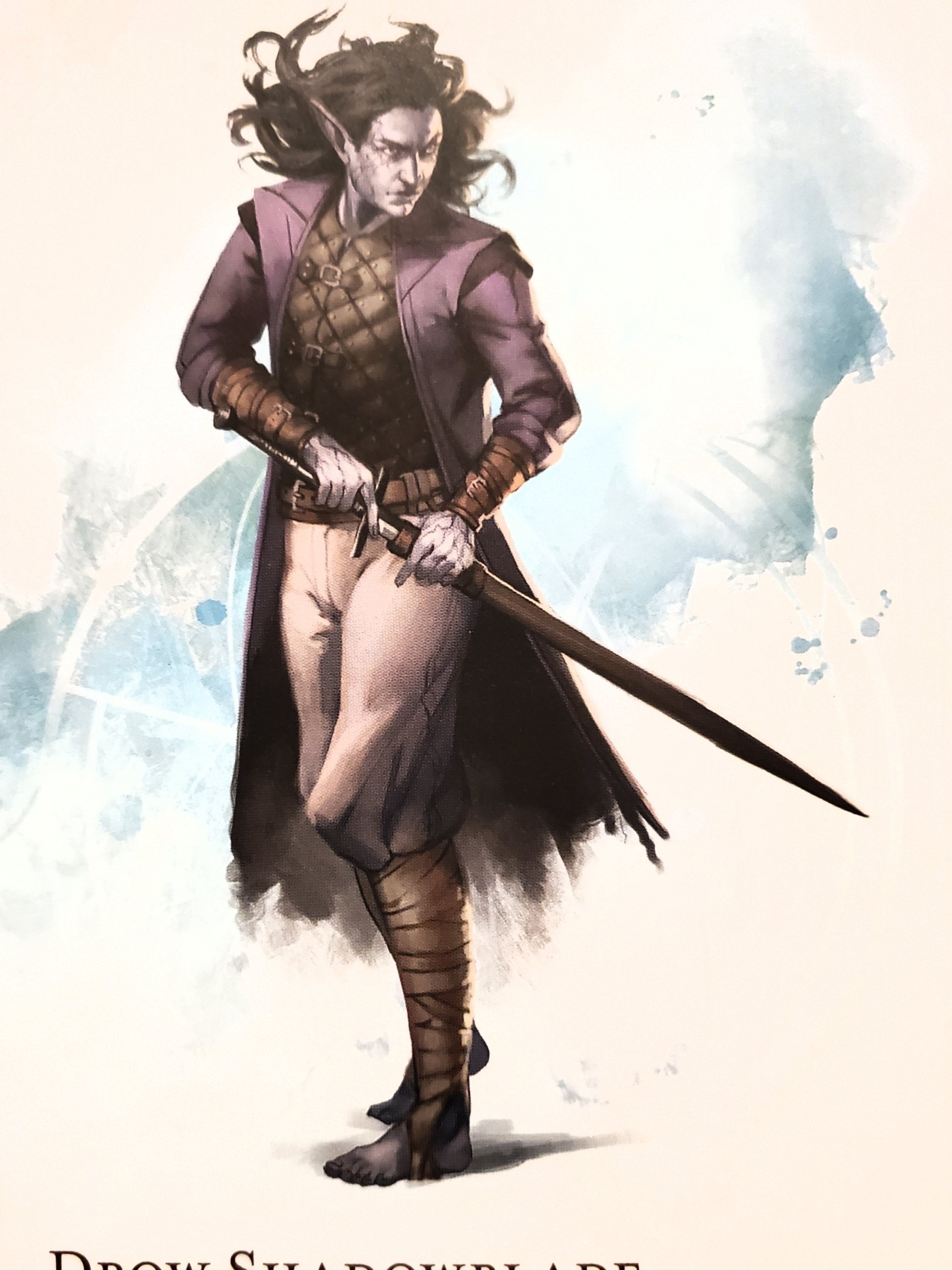
Like all Elves, they have a +2 to Dexterity, and drow has a +1 Charisma bonus as well. Combine that with a selection of bonus spells like dancing lights, faerie fire, and darkness, all Charisma-focused, and you’ve got the makings of a great Sorcerer or Warlock. Both will appreciate the big boost to Dex and the bump to Charisma.
But Drow also makes great Rogues and Rangers and dex-based Fighters (archers and the like), too. Although, again, with Tasha’s Cauldron, you can make that a +2/+1 in any ability score, so your mileage can definitely vary.
Duergar
Duergar are dwarves whose ancestors dwelled in the deepest cthonic regions of the Underdark. There they were transformed by magical energies and experimented on by mind flayers and other aberrations. Now, they have many psionic gifts.
Specifically, they have Duergar Magic, which grants them the ability to cast enlarge/reduce without a spell slot once per day. And at 5th level, they can cast invisibility with this trait. On top of this, they have the typical dwarven resistance to poison and an advantage on saves to end the charm and stun effects.
This D&D race can pick from either +2/+1 or +1/+1/+1 to their ability scores. So Duergar have a leg up over the PHB dwarves (for now). And that means they can be suited to any class. Their enlarge/reduce ability makes them quite suited to melee fighters, since that’s a great way to give additional damage and battlefield control. But Rogues benefit from their inherent invisibility. And any class at all can make their abilities work. But Fighters, Rune Knights especially, are a great choice for Duergar characters.
Dwarf
Another iconic D&D race. These have been around since before D&D was D&D. Dwarves live up to their fantasy first impressions and love crafting, gold, mining, and smithing.
Just think of a fantasy dwarf, and you have the right idea. PHB dwarves get +2/+1 OR can have +2/+2 (to either Con/Wis or Con/Str, respectively, but you can do whatever you want with Tasha’s Cauldron’s rules). Alongside that, they are resistant to poison of all shapes and can move at full speed (25 feet) in heavy armor.
Dwarves once made excellent Fighters and Barbarians and Clerics. But now this D&D race is an amazing choice at anything. Until they fix the +2/+2 thing, you can go wild with Tasha’s Cauldron of Everything‘s ability score flexibility. This means now is the time to make the ultimate character. As long as they’re a dwarf.
Eladrin
These are the highest of high elves. They are from the Feywild and have the ability to change their magic based on what season they’re feeling on any given day.
Mechanically speaking, this D&D race has Fey Step, the ability to magically teleport up to 30 feet as a bonus action. After hitting 3rd level, they can pick a seasonal benefit after any long rest to stack an additional effect to that teleport. Autumn lets you charm up to two creatures within 10 feet of your teleport arrival. Winter, on the other hand, frightens one creature within five feet of you. Spring lets you pick a willing creature within five feet to teleport instead of you. And Summer deals fire damage to each creature you pick within 5 feet.
They can pick from either +2/+1 or +1/+1/+1 to their ability scores, which makes Eladrin extremely flexible and suited to any class they like. Their abilities play well with pretty much any choice.
Elf
This D&D race is like dwarves, but they’re elves. Do they really need an introduction? They live long lives, love music and the arts, and don’t need to sleep. There are three main varieties: Drow, High, and Wood. We’ve mentioned Drow, but the other two are fairly common. Elves of any kind get +2/+1 to their ability scores.
As well as proficiency in perception, darkvision, and trance ability, which means they don’t sleep. High elves know extra magic, while wood elves have a moving speed of 35 feet and can hide in natural phenomena.
High elves make natural Wizards, and wood elves are natural Rangers, but you really can’t go wrong with any option. The ability scores can be tuned to whatever class you want. And their abilities are broad enough; Fighters would want a wood elf’s increased speed. So might a Sorcerer. Since, for now, high elves have their cantrips limited to Intelligence, casters who use Intelligence (so Eldritch Knights, Arcane Tricksters, Wizards, and Artificers) will get a little extra mileage out of them. But it’s not that much of a bump.
Firbolg
This D&D 5E race has been made extremely popular after Critical Role, Campaign 2’s Caduceus Clay, firbolg are big furry forest friends. They are gentle, distant cousins of giants who possess a natural affinity for obscuring magic.
Firblog can turn magically invisible as a bonus action for a single round (or until they make an attack or cast a spell that makes someone make a saving throw), thanks to their Hidden Step, and they can also speak to Beasts, Plants, and vegetation. Which is pretty cool. Firbolg Magic on the other hand, gives them access to detect magic and disguise self.
They can pick from either +2/+1 or +1/+1/+1 to their ability scores. This means, once again, they’re pretty well suited to any class.
Genasi
Genasi got a significant rework in Mordenkainen Presents: Monsters of the Multiverse, and they came out way on top. This D&D race is the descendants of genies from the Elemental Planes and are associated with air, earth, fire, or water.
- Air Genasi can hold their breath forever and can cast shocking grasp at will, as well as feather fall and levitate.
- Earth Genasi can cast blade ward as a bonus action, making it actually useful as a spell. They also get pass without trace and can move across difficult terrain on the ground without spending extra movement.
- Fire Genasi can cast produce flame and burning hands and flame blade by the time they hit 5th level.
- Water Genasi have a swim speed, and can breathe air and water. On top of this, they get acid splash, create or destroy water, and water walk.
This D&D 5E race can pick from either +2/+1 or +1/+1/+1 to their ability scores. So again, they can be suited to anything. Their abilities give them a wide range of options. Earth genasi make great melee characters like Barbarians, Paladins, or Fighters thanks to their blade ward, but even then, any character would benefit from any genasi abilities.
Githyanki
This D&D race is comprised of escaped servants of the mind flayers in aeons past, Githyanki are now pirates and raiders living in the Astral Plane. They are ageless, while there. And have developed an affinity for psionic powers and adventure.
Githyanki, like their cousins the Gith, can gain proficiency in a skill and a weapon (or tool) at the end of each long rest. On top of that, Githyanki Psionics give them a suite of spells: mage hand, jump, and misty step.
They can pick from either +2/+1 or +1/+1/+1 to their ability scores. Their abilities make them particularly suited to both using magic but also fighting in melee. Githyanki originated the term Gish (meaning a fighter/mage) and excel with any class combo that lets them do that. Jump and Misty Step can get them in or out of combat. But honestly, things are flexible enough that you can play whatever you want.
Githzerai
Githzerai, like their cousins the Githyanki, escaped the mind flayers and developed psionic powers. Only they escaped to the Everchanging Chaos of Limbo and use their minds to create stillness in the chaos.
Githzerai Psionics reflects this option. They can cast mage hand, shield, and detect thoughts. And they are resistant to being charmed or frightened.
They can pick from either +2/+1 or +1/+1/+1 to their ability scores. Which like the Githyanki, makes this D&D 5E race excellent magical meleeists. Githzerai with their innate ability to cast shield can effectively cancel one attack (or more) and can cast it with spell slots.
This makes for great Paladins, melee-focused Bards/Sorcerers/Warlocks.
Gnome
Gnomes are connected to the Feywild and love to create cozy burrows and have a natural inquisitiveness about the world around them. Inventors and naturalists, know many things.
And their abilities reflect their connection to the natural world. Like all gnomes, they have an advantage on Int, Wis, and Cha saves against spells. Forest gnomes learn the minor illusion cantrip, and can speak with woodland creatures, while rock gnomes are gifted tinkerers and can create tiny clockwork devices that do different things.
They +2/+1 to their ability scores. This D&D race is honestly suited to anything. A rock gnome’s tinker ability thematically makes them suited to Artificers, as does a forest gnome’s woodland speech makes them a natural fit for Druids. But that’s just flavor. Gnomes don’t have any play style suggested by their abilities, so go wild.
Goblin
Goblins are a bunch of subterranean fey creatures who have a knack for trouble, mischief, and finding the weak spots in things bigger than them. Which are most things.
Goblins have Fey Ancestry, like elves, which makes them resistant to being charmed. They also can make a Nimble Escape disengaging or hiding as a bonus action. But this D&D 5E race’s signature ability is Fury of the Small which lets them add their proficiency bonus to damage when they deal damage with an attack or a spell to a creature one or more sizes larger than them. They can only do it [proficiency bonus] times per day, which is a nerf from where it was. But it’s still good.
They can pick from either +2/+1 or +1/+1/+1 to their ability scores. Their Fury of the Small and Nimble Escape makes for excellent Rogues. Though Nimble Escape is honestly kind of a net wash there, as most Rogues have Cunning Action. Goblins can make surprisingly defensive Fighters or Paladins, especially when you pile on damage to your attacks from Fury of the Small. But their abilities complement any more offensive/attack-focused class, from a magic user to a martial one.
Goliath
Everyone’s favorite big mountain-dwelling hulking stony folk. Goliaths live in the mountains in colder environs. They are distantly related to giants, and have supernatural powers from the essence of their mountainous homes.
Mechanically this translates to resistance to cold damage, and the ability Stone’s Endurance which lets you use your reaction to roll a d12 and add your Con modifier to reduce the damage from an attack. You can do this [proficiency bonus] times per day.
This D&D race can pick from either +2/+1 or +1/+1/+1 to their ability scores. And Goliaths play a little more aggressively. They want to be in there, taking damage so they can use Stone’s Endurance. It doesn’t matter the class, just as long as you can take a hit or two, which works whether you’re playing a sword-and-board Fighter or an Abjurist Wizard-tank.
Half-Elf
Half elf, half human (for now, at least). Half-elves are wanderers and people who sit astride two worlds without necessarily belonging to either. They have the best of both worlds, though, and it’s reflected in their features.
Mechanically, those features are Fey Ancestry, which makes them resistant to charms. And Skill Versatility, which grants you two proficiencies. But their biggest draw is their ability score array.
Half-elves can pick +2/+1/+1 to their ability scores, which makes them well-suited to any character concept that is dependent on multiple ability scores. Do you want to multiclass? Half-elves are good at that; they can pick up those prereqs and split their bonuses to be good at everything. Paladins, Monks, and Rangers, classes that historically want you to spread your ability scores around, are also great for Half-Elves. Same with Barbarians, who get a lot out of Str, Con, and Wisdom.
Half-Orc
Half-orcs are half-orc, half-human (again, for now). Like half-elves, this D&D race sometimes have trouble fitting in either of their respective worlds. But they do get cool abilities to make up for that yearning to fit in.
Mechanically speaking, they get darkvision and proficiency in Intimidation or another skill. But their big draws are Relentless Endurance, which lets you avoid death once per day: when you would be reduced to 0 hit points, you can instead drop to 1 hit point (as long as you’re not killed outright by like disintegration or something). Savage Attacks make any critical hit with a melee weapon attack extra spicy since you can roll one of the weapon’s damage dice an additional time and add it to the extra damage of the critical hit.
They get +2/+1 to their ability scores. And as their racial abilities suggest, they make excellent melee combatants. They really wanna be in there with as big a weapon as possible. Half-orc Barbarians really shine. With reckless attacks, they can crit more often, and they can turn 2d12 into 3d12 and then some.
Halfling
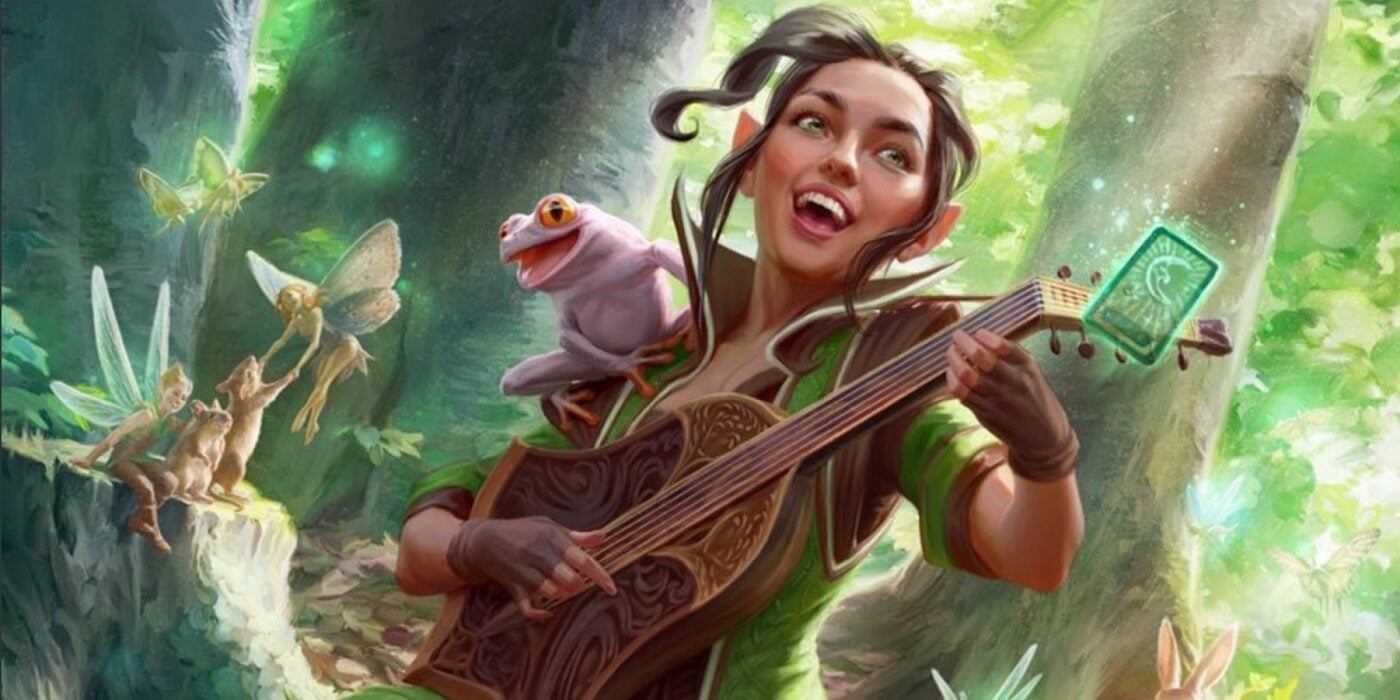
Halflings are small folk who love the comforts of home, particularly a good pint and a grand meal. You’ve seen Lord of the Rings. TSR didn’t get sued by the Tolkien estate for halflings to not just be hobbits.
Mechanically, they are very lucky. This D&D race can innately reroll any natural 1 on an attack roll, ability check, or saving throw. Lightfoot halflings can use their natural stealth to hide behind creatures larger than them. While Stout halflings are naturally resistant to poison.
They get +2/+1 to their ability scores. And while lightfoot halflings make for good Rogues because they can always hide behind a larger creature. That’s only the barest hint of a suggestion. A halfling makes a great anything. Fighter, Barbarian, Wizard. Anyone who wouldn’t want to roll a 1 is going to love being a halfling. It’s more about flavor and the meals you enjoy.
Harengon
Rabbitfolk from the Feywild, harengon are born tricksters. Though they may look cute, harengon are surprisingly fierce when they need to be. They value freedom and travel.
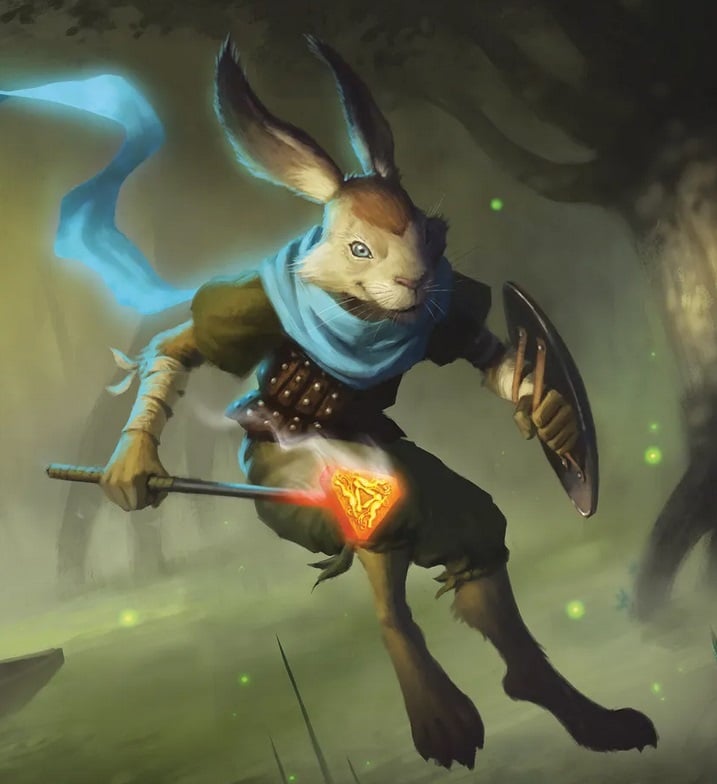
And their abilities reflect this. They have Lucky Footwork, which lets you add a d4 to any failed Dexterity saving throw, potentially turning it into a success. Rabbit Hop lets them jump up to five times their proficiency bonus as a bonus action without provoking opportunity attacks.
They can pick from either +2/+1 or +1/+1/+1 to their ability scores. This, combined with their abilities, makes them natural for anyone who would want to move in and out of melee combat. Harengon Monks will have an extra bonus action option. While harengon Wizards will have a last-ditch get-out-of-melee ability if they need it.
Human
Ah. Look, nobody’s going to judge you for liking vanilla ice cream. It’s delicious. And that’s what humans are in D&D.
They’re plain, and the way most people play them is the Variant Human. Did you know that, technically, humans get +1 for all ability scores? Or you get +2/+1 to any ability scores, and also a free bonus feat. I know which I’d pick, and so would you.
As generic as humans are, they make for a great option for any character class or concept. There’s not one that they can’t do.
Lizardfolk
Lizardfolk are saurian people who have been around since the Material Plane was created. They are physically tough, mystically connected to the natural world, and can survive against the odds.
Lizardfolk have Natural Armor which grants them an AC of 13 + Dex modifier, and are proficient with two extra skills, can hold their breath for up to 15 minutes at a time, and can take a bite with their Hungry Jaws. This ability lets you make a bonus action attack with your bite (1d6 + strength modifier damage) and if you hit, you deal your normal damage and gain temporary hit points equal to your proficiency bonus. You can do that [proficiency bonus] times per day.
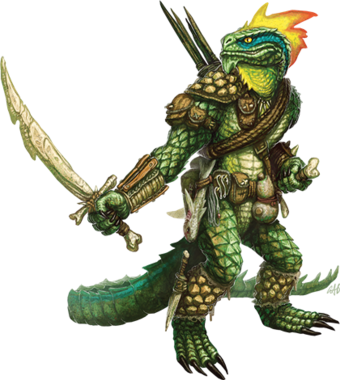
They can pick from either +2/+1 or +1/+1/+1 to their ability scores. All of this adds up to Lizardfolk making great melee combatants. They make surprisingly good gish since they never have to use Mage Armor and will want to be in melee to use their Hungry Jaws for temporary hit points. Hexblades and melee Bards and Sorcerers rejoice. Your lizard lords are here.
Shifter
Shifters are everyone’s second favorite thing to come out of Eberron. These are the descendants of lycanthropes. Call them weretouched or bestial if you want. They’re for the furry-curious.
The big draw of Shifters is their ability to unleash their inner beast with Shifting. This is a bonus action that transforms you, granting you twice your proficiency bonus in temporary hit points. As well as one of four different minute-long effects:
- Beasthide Shifters add an extra 1d6 temporary hit points and gain a +1 bonus to AC.
- Longtooth Shifters can make attacks with their fangs as a bonus action or when they shift, dealing 1d6 + strength modifier damage on hit.
- Swiftstride Shifters are fast, gaining 10 feet of extra movement, and can move up to 10 feet as a reaction when a creature ends its turn within 5 feet of them (without provoking opportunity attacks).
- Wildhunt Shifters have an advantage on Wisdom checks and no creature within 30 feet of them can make an attack roll with an advantage.
They can pick from either +2/+1 or +1/+1/+1 to their ability scores. As you might expect, these abilities suit Shifters to melee especially. Barbarians will love playing as Wildhunt shifters, since you can make a Reckless Attack with no penalty for a few times per day. But Rogues will get a lot out of Swiftstriding, Longtooth and Beasthide benefit characters who are within melee range to either do more damage or take more attacks. That’s their preferred playstyle.
Tabaxi
These are khajit cat people who were created by the Cat Lord to blend the qualities of humanoids and cats. Tabaxi took that idea and ran with it, either acting a little feline or rebelling entirely and living as other folk do. Which is also very catlike if you know any.
They are the fastest playable race in the game. This is because of their Feline Agility which lets this D&D 5E race move with an incredible burst of speed. When they decide to use this ability, they can move at double their speed until the end of their turn, which allows for some truly ludicrous movement. On top of that, they have claws and proficiency with perception and stealth which translates to two different skills.
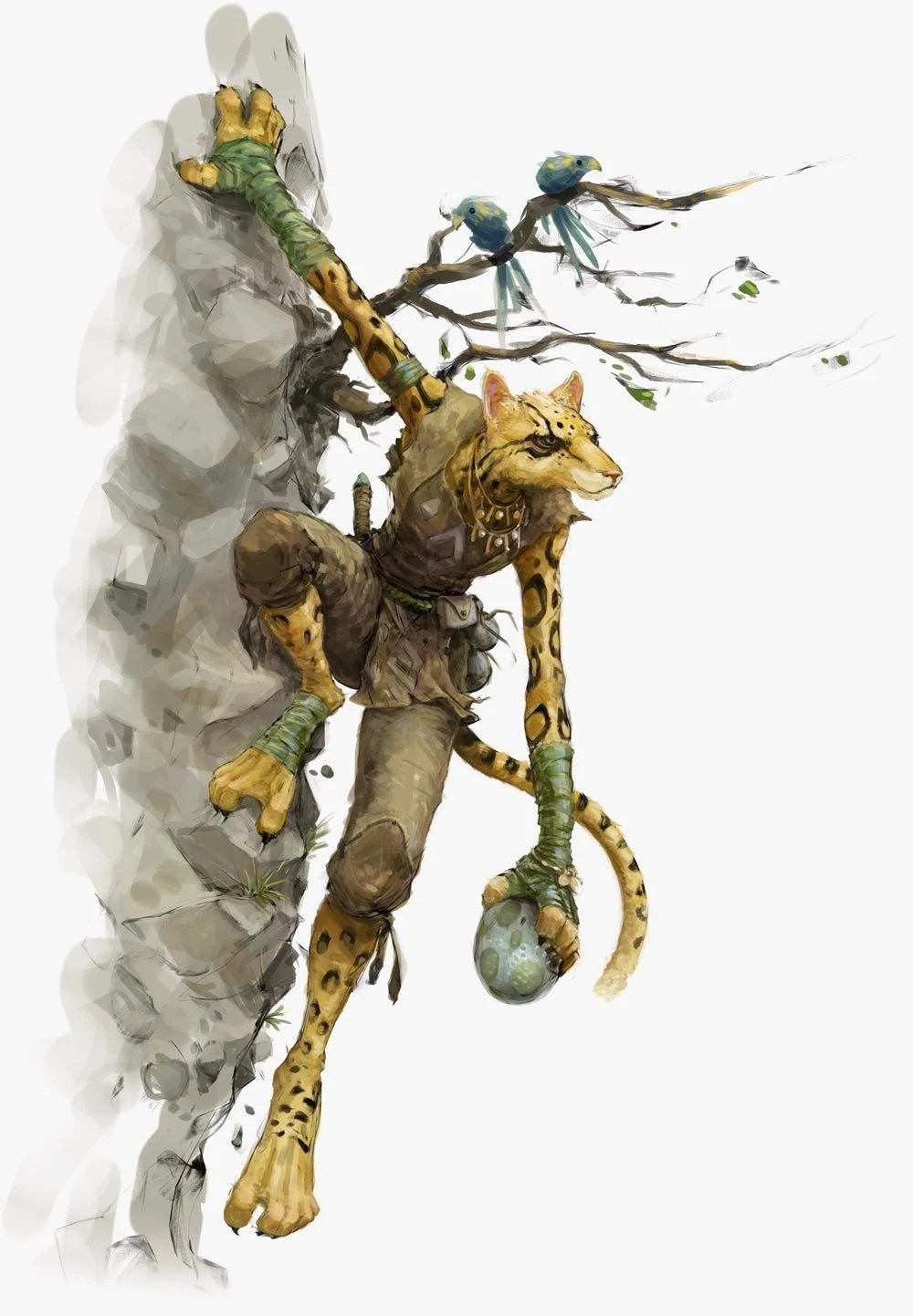
They can pick from either +2/+1 or +1/+1/+1 to their ability scores. And like any good cat, they are perfectly suited to whatever they’re doing at the time. Every class benefits from increased mobility. Go wild. But also, don’t hit the catnip too hard.
Tiefling
Tieflings you might recognize from your favorite piece of fan art for any D&D campaign that’s live-streamed on the air. It seems like a requirement to have one of these descendants of fiends, who come in an array of colors and horn styles.
Their hellish legacy gives them power. This D&D 5E race is resistant to fire damage, and the ability Infernal Legacy means they know the cantrip thaumaturgy, and can cast hellish rebuke and darkness with their Charisma.
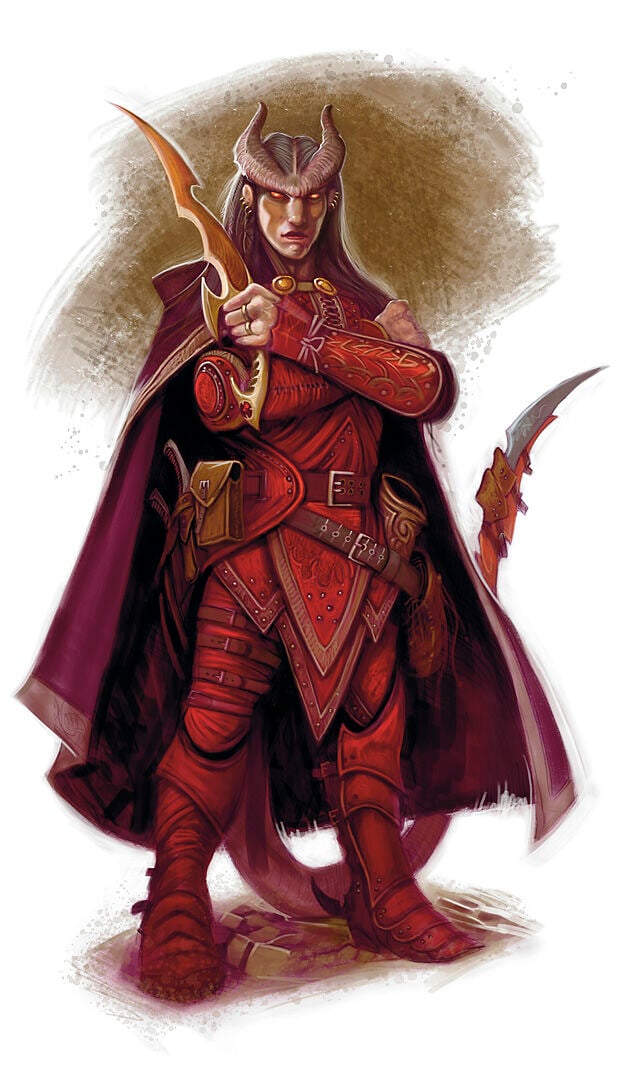
This D&D 5E race gets +2/+1 to their ability scores and make for good Charisma-based casters since they have those bonus spells. Tieflings are natural Warlocks but also Bards, Sorcerers, and Paladins. But again, it’s only the most minor of suggestions. Really just play whatever you want with them.
Tortle
Tortles are big fantasy turtle people who don’t live especially long, which is weird. You’d think that turtle people would live a long time, but they don’t. They do, however, have armored shells.
Natural Armor in Tortles takes a unique form. This D&D 5E race’s hard shell provides them with a base AC of 17 (and they can never add their dex modifier to this). They can’t wear armor but can use a shield. They also have natural claws, and as a bonus action can withdraw into their shells, gaining a +4 bonus to their AC and an advantage on Strength and Con saves. However, this AC bonus is somewhat mitigated by the fact that they’re prone.
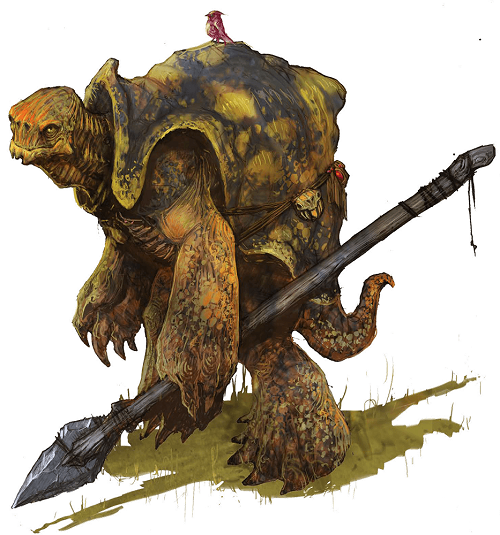
They can pick from either +2/+1 or +1/+1/+1 to their ability scores. This D&D 5E race’s heavy shell makes them a great fit for any class that doesn’t get a lot out of armor. Play a spellcaster of any kind. Or a Bard who wants to dump Charisma. If you want to not worry about defense (but also not going to have a ton of attacks come your way) consider a Tortle.
Warforged
Finally, everyone’s favorite thing about Eberron. These are living constructs created for war or some other specific purpose if you’re playing outside of Eberron. These magical robots are new creations and want to learn about humanity.
This D&D 5E race has Constructed Resilience, which means they are immune to disease and don’t sleep, eat, drink, or breathe. And they are resistant to poison. They also have Integrated Protection, which grants you a +1 bonus to their Armor Class, which can help push their defense even higher.
Warforged get +2/+1 to their ability scores. Their natural armor and resilience make them particularly suited to any defense-minded class. Fighters and Paladins are a natural fit. But they make surprisingly good Wizards. Especially Abjuration Wizards, with their enhanced defense.


